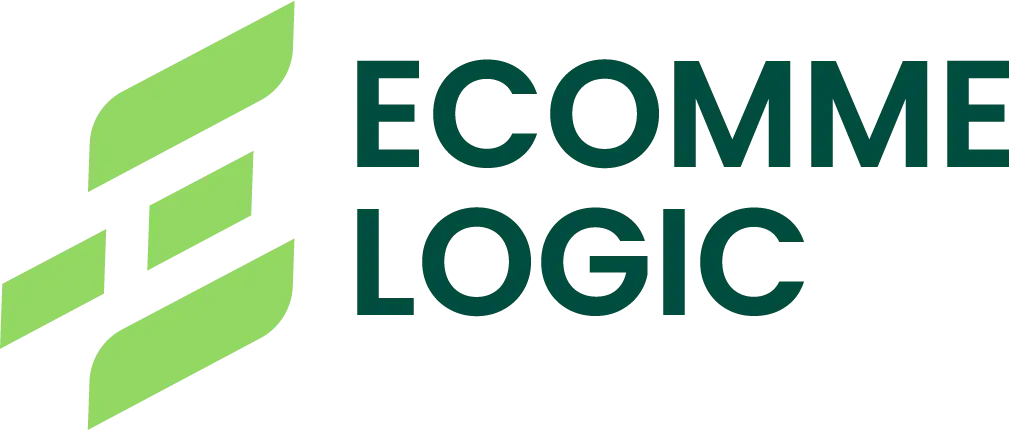Accessibility in online and app design has changed from being a “nice-to-have” to becoming a vital requirement as we advance farther into the digital era. In 2025, creating accessible digital experiences is essential for any business that wants to grow, serve a broader audience, and stay compliant with global regulations.
At EcommeLogic, we understand that accessibility is not just about compliance—it’s about creating inclusive, meaningful, and friction-free user experiences for everyone.

What Is Accessibility in Web Design?
Designing websites, tools, and technology to be usable by individuals with impairments is known as web accessibility. This includes users with visual, auditory, motor, or cognitive impairments. Accessibility ensures that all users can:
- Navigate websites easily
- Access content using assistive technologies like screen readers
- Interact with forms, menus, and multimedia elements
- Understand the information presented without barriers
The foundation of accessible design lies in the Web Content Accessibility Guidelines (WCAG), which provide global standards to help make digital content more accessible.
Why Accessibility Matters in 2025
1. A Significant Portion of the Global Population Lives with Disabilities
The World Health Organization (W.H.O) estimates that more than 1.3 billion individuals have a disability. That’s around 16% of the global population—and this number is only increasing as populations age. Designing accessible websites opens up your business to a massive and often underserved audience.
2. Legal Compliance and Risk Reduction
In 2025, governments around the world are reinforcing digital accessibility laws. In the U.S., the Americans with Disabilities Act (ADA) continues to be used in lawsuits targeting websites that fail to meet basic accessibility standards. Similar laws exist in the UK, EU, Canada, and Australia. Not meeting these standards could expose your business to lawsuits, fines, and reputational damage.
3. Better Search Engine Optimization (SEO)
Accessibility and SEO go hand-in-hand. Features like descriptive alt text for images, properly structured headings, video transcripts, and clean code improve not just user accessibility, but also search engine rankings. Google favors websites that provide clean, structured content that benefits all users, including those using assistive tools.
4. Enhanced User Experience for All Users
Designing with accessibility in mind benefits everyone, not just users with disabilities. For instance:
- Captions help users in noisy environments.
- Good color contrast helps people in bright sunlight.
- Clear navigation benefits users on small mobile screens.
By focusing on inclusive design, you naturally create more user-friendly experiences across the board.
5. Brand Reputation and Customer Loyalty
A brand that prioritizes accessibility signals that it values inclusivity and customer care. This builds trust, encourages customer loyalty, and differentiates your business in a competitive digital space. In 2025, people are more likely to support brands that reflect their values.
How EcommeLogic Designs for Accessibility
At EcommeLogic, accessibility is built into every step of our web and eCommerce development process. We help clients meet WCAG 2.1 AA and ADA standards through:
- Proper HTML semantics and ARIA labeling
- Keyboard-friendly navigation
- Descriptive alt text for images
- Readable fonts and scalable design
- Sufficient color contrast and color-blind-friendly palettes
- Accessible forms with clear labels and error messages
- Testing on screen readers and assistive devices
We don’t treat accessibility as an afterthought—it’s embedded in our design philosophy.

Future-Proofing Your Website
By investing in accessibility today, you’re not just complying with laws—you’re future-proofing your digital presence. As AI, voice technology, and new devices continue to emerge, having a solid foundation of accessibility ensures your site remains usable, relevant, and inclusive for years to come.
Accessibility also increases market reach. Whether you’re selling on Shopify, offering online services, or scaling an eCommerce brand, making your platform inclusive unlocks more growth potential.
Final Thoughts
Accessibility is not a trend—it’s a commitment to creating a better web for everyone.
If your business is serious about reaching wider audiences, reducing legal risks, and building a strong brand in 2025 and beyond, accessibility must be part of your digital strategy.
At EcommeLogic, we empower businesses to grow with accessible, optimized, and conversion-driven websites.
Are you prepared to improve the impact and accessibility of your website?


